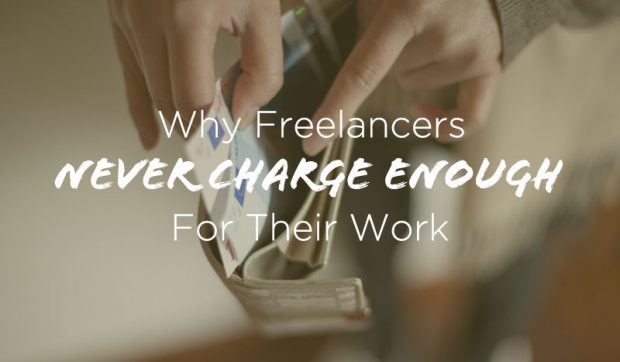
In the world of business, it’s pretty easy to find out how much your peers get paid with GlassDoor, Indeed, and other websites that make it easy to estimate a fair salary, based on the competition and market demand.
But for freelancers and small business owners, setting your rates and making the money you deserve, can be a little trickier.

Short of actually calling around to ask after the rates of others offering similar services (which actually is not a terrible tactic), how do you know how to set freelance rates for your business?
First, it’s important to note that there’s a big difference between “rates that keep you afloat” and “rates that make you real money.”
Photographer Sue Bryce refers to the former as the “survival rate.” This is the amount of money that’s required to keep the lights on, but it doesn’t actually help you get ahead. Why do so many freelancers and other business owners settle for offering their services at a cut rate?
The main reason creative entrepreneurs end up charging too little, “is because they confuse fees or services with their personal value/worth,” says Ilise Benun, CreativeLive instructor of Command the Fees You Deserve.
“The two have nothing to do with each other. If you can see that, the value of your services has more to do with what the client will get out of what you can do for them, then you can charge more. Its not about YOU. Its about the value to them.”
Figuring out how much to charge means divorcing your self worth from the services you offer.
You’re not asking people to buy you, you’re telling them how much your time, energy, and talent is worth, and then letting them make the decision.

Additionally, says Ilise, conversations about price make most people uncomfortable.
They just don’t like to talk about it, so often, they don’t. They pick rates that they think people will pay, and hope that that will make the negotiation process easier.
“People think broaching the topic of money will make the client run away.” But, she says, that’s actually not true. In fact, talking about money — and charging what your work is actually worth — will make client negotiation and relationships better.
“You find better prospects and clients. It’s that simple. You find people who can pay what you need to earn… then you ask them for it.”
Another reason that many people charge too little: They forget that they are the expert in the room, and that they command the situation.
Remember that your client is looking to you to lead the conversation, not the other way around. They are coming to you for the service — a service they want — and it’s your job to let them know that they are in good hands and that you are worth whatever it is you’re asking them to pay.
“The quality of the work really has little to do with the price you are paid. Clients have a hard time telling what is great and what is not. It’s how you present it. Thats why you see people who aren’t ‘great,’ make a lot at what they do,” she says.
In the end, it’s much more about confidence and understanding what value you deliver, than it is about the actual dollar amount you charge.
If you’re ready to start a freelance business, or get serious about growing your existing client base, download our free eBook, The Freelancer’s Roadmap.


